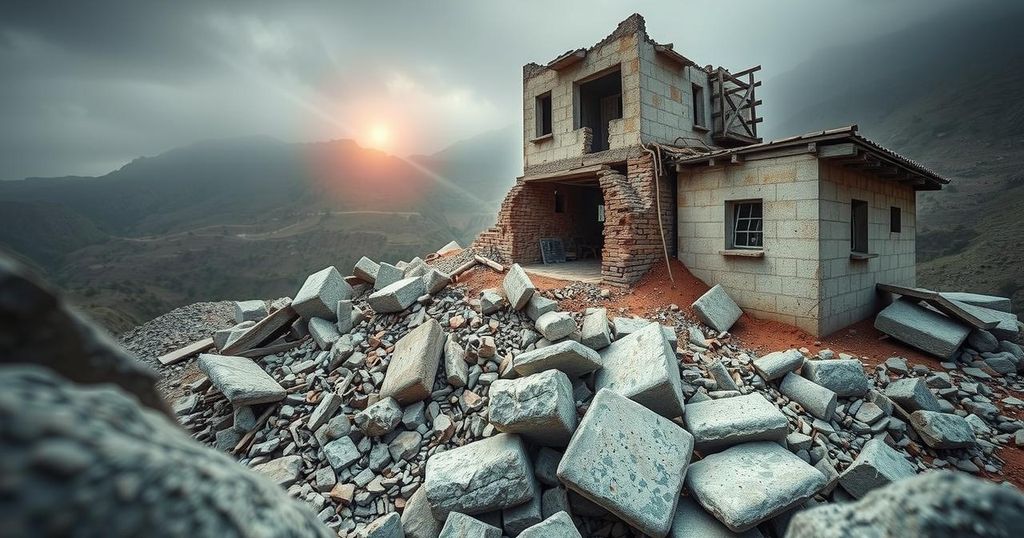Ethiopian Earthquakes and Their Impact on the Grand Ethiopian Renaissance Dam

Ethiopian earthquakes have prompted the evacuation of over 80,000 residents, causing concerns for the Grand Ethiopian Renaissance Dam (GERD). Sudanese geoscientists reassure that these quakes, the largest being 8.1, are well within a safe distance from the dam. The GERD’s design incorporates seismic resilience, minimizing perceived risks and advocating for joint scientific assessments of environmental impacts.
Recent seismic activities in Ethiopia’s Afar region, which have caused the evacuation of over 80,000 residents due to numerous earthquakes and aftershocks, have raised concerns regarding the safety of the Grand Ethiopian Renaissance Dam (GERD). However, Sudanese geoscientists assert that the seismic events occurring over 100 kilometers from the dam pose no threat. The most significant quake, registering at 8.1, occurred today, following prior quakes of 5.8 and 5.5 magnitude, with additional tremors reported in the last week. Experts emphasize that the GERD was engineered to endure seismic disruptions and is strategically located away from seismic zones.
Engineer Abdelkarim El Amin highlighted that although current seismicity has led to speculation, the design of the GERD incorporates robust safety measures against potential earthquakes. He noted that concerns about low water levels in the reservoir lake possibly indicating a leak are unfounded in light of the seismic events occurring far from the dam. “What is important is that the area where the GERD is built is far from the earthquake zone in eastern Ethiopia,” he remarked, assuring that extensive geological studies were conducted prior to its construction.
In discussing potential repercussions in a worst-case scenario involving a dam failure, El Amin warned of significant flooding risks for the Nile region. He pointed out that even a partial compromise of the dam could inundate substantial territories in Sudan and Egypt, affecting critical infrastructure along the Nile. To address ongoing concerns, he advocates establishing a collaborative unit of experts to comprehensively evaluate the GERD’s implications for water resources and environmental impacts without political bias. This effort is crucial for sustainable management of the Nile Basin’s water resources.
The current earthquakes in Ethiopia have generated considerable worry regarding the stability of the Grand Ethiopian Renaissance Dam (GERD), a major infrastructure project. Located along the Blue Nile River, the dam is vital for Ethiopia’s development and energy needs. Given its proximity to seismic activity, stakeholders in Sudan and Egypt have raised alarms about potential risks to water flow and regional stability. Nonetheless, studies indicate that the GERD has been designed to withstand significant seismic events, an essential feature considering the geological vulnerabilities of the region. The ongoing seismic activity has prompted calls for closer monitoring and collaborative efforts among Nile Basin nations to ensure safety and mitigate environmental impacts.
In summary, while the recent earthquake swarm in Ethiopia has raised alarms regarding the Grand Ethiopian Renaissance Dam, experts assert that the dam’s engineering is sufficiently robust to handle such seismic activity without compromising structural integrity. The distance of the earthquakes from the dam itself further alleviates concerns about immediate risks. Nonetheless, it is vital for affected states to engage in collaborative scientific evaluations of the GERD’s environmental and hydrological effects, promoting a unified approach to water resource management in the Nile Basin.
Original Source: www.dabangasudan.org






